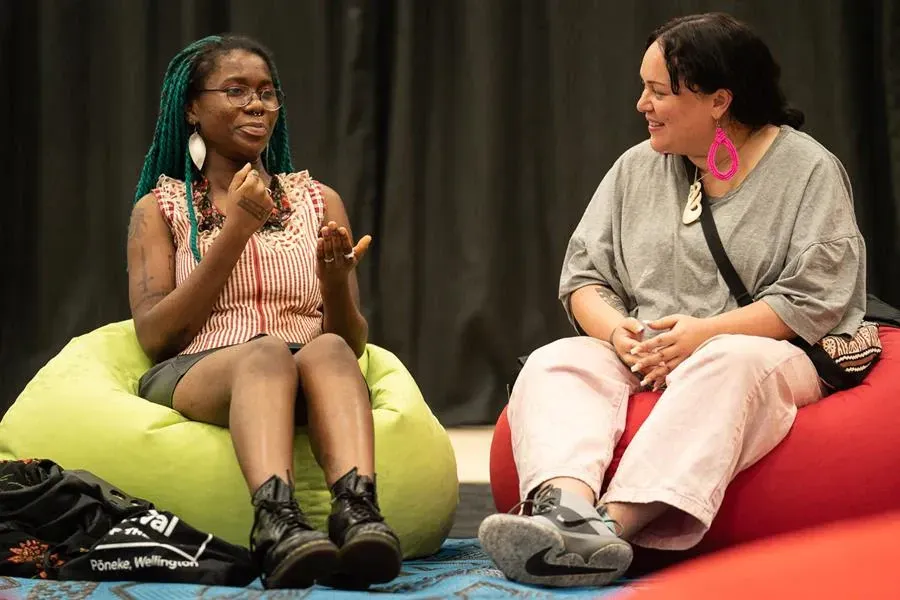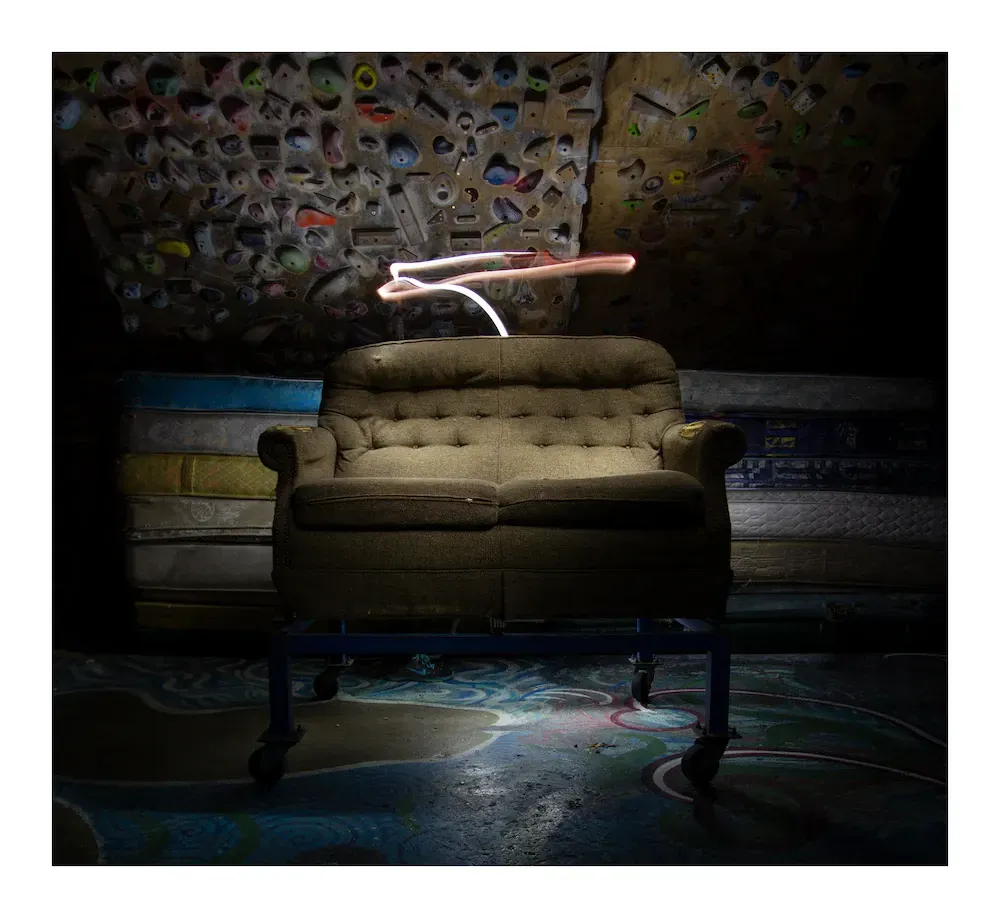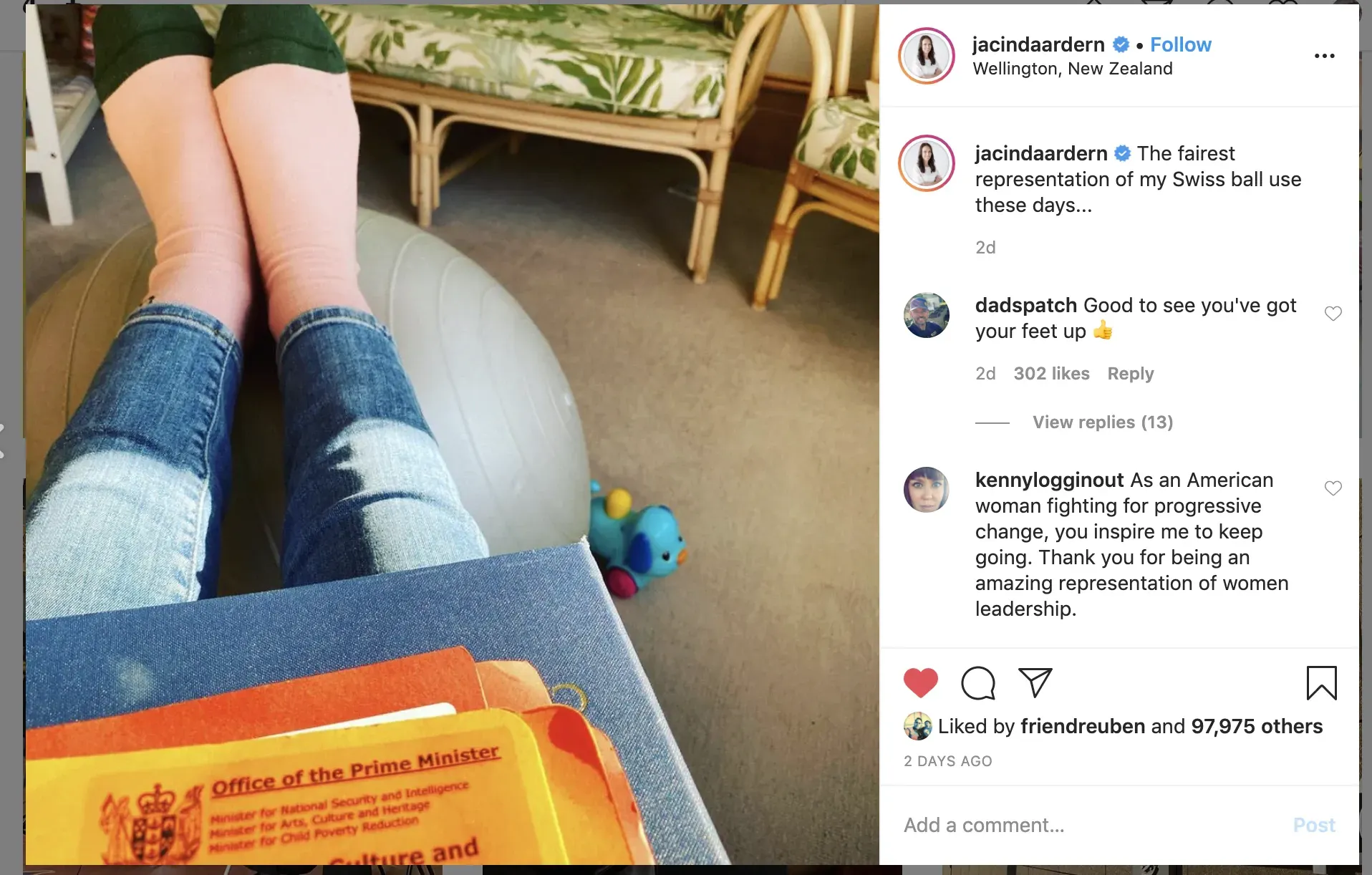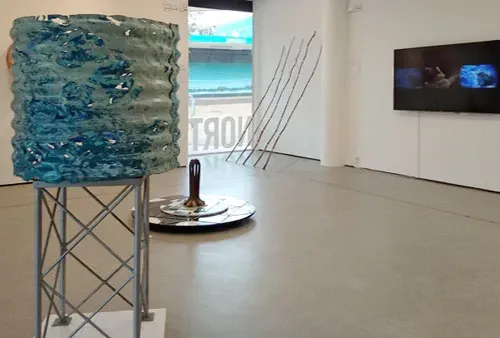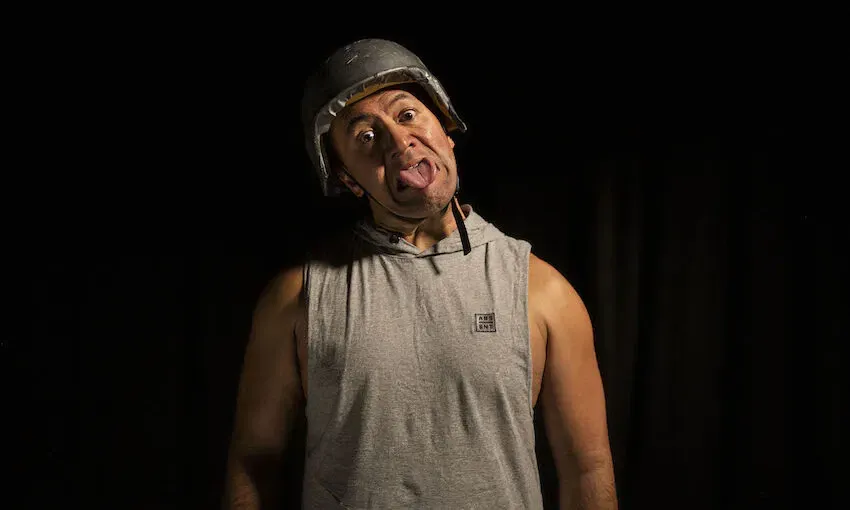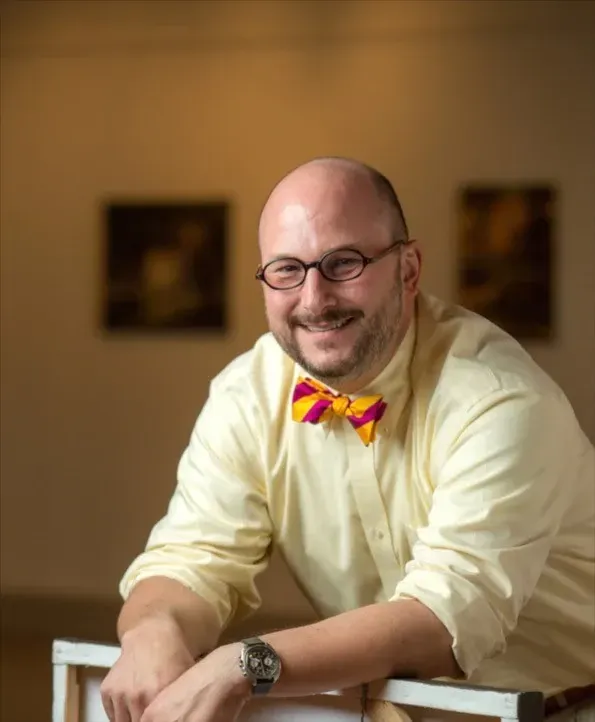Level One but Still Work to be Done
Written by
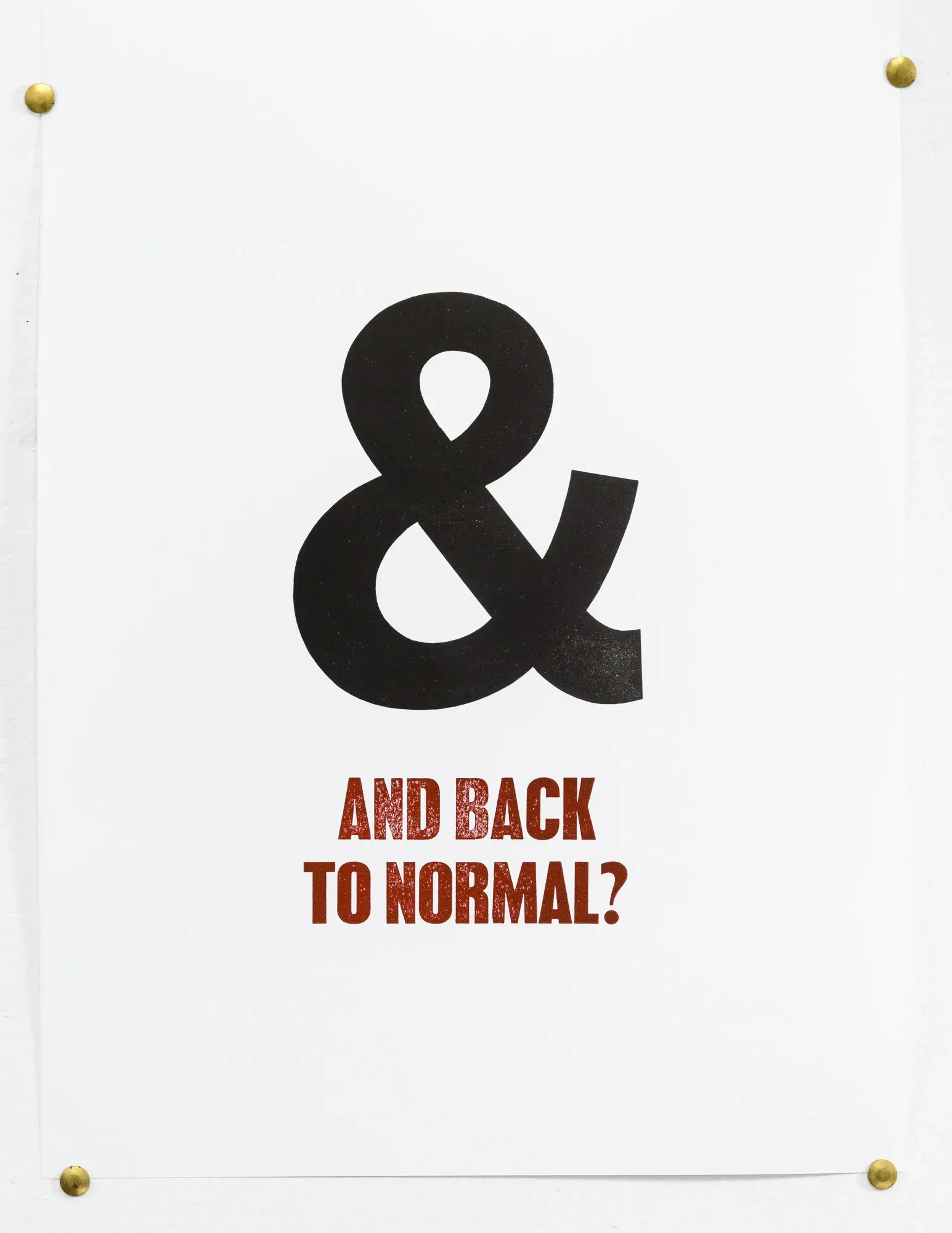
Calling Out Racism
New Zealand Festival is playing its part to support activism in the United States, and causes like Black Lives Matter: sharing a message from writer and artist Jessicoco Hansell (aka Coco Solid). Hansell is asking for help in supporting fellow recent NZ Festival guest writer Kara Jackson, who is the US Youth Poet Laureate.
“If you attended the Talanoa Mau in February,” Hansell writes, “it is likely you heard many of talented black writers, artists, academics and speakers and learnt from them... Kara is in Chicago doing crucial work to protect, support and is using her platform to channel funds to those on the ground… Kara has created (a now-viral) Google Doc with a comprehensive list of places to donate.”
She goes on to say “Kara has sent a message, saying the movement has been deeply affected by our local efforts this week, to see the recent march footage in Auckland and ‘to have felt that love from so far’ was not taken lightly — it is giving people in the US a very real strength. For those of us working across various interconnected kaupapa in the South Pacific, if we send acts of solidarity we know first-hand it must also be backed up with resources and tangible support.”
Speaking of back home: in the ten years from 2009 until 2019, writes Alice Webb-Liddell on The Spinoff, two-thirds of people shot by police in New Zealand were Māori or of Pacific Island descent. Rob Mokaraka was one of them, as he captured in his powerful solo play - Shot Bro: Confessions of a Depressed Bullet - about the depression that led to him calling the police on himself and getting shot. “I saw young Māori people, men, being shot by police when I was growing up so I just thought ‘I’m the prime candidate’,” Mokaraka told The Spinoff.
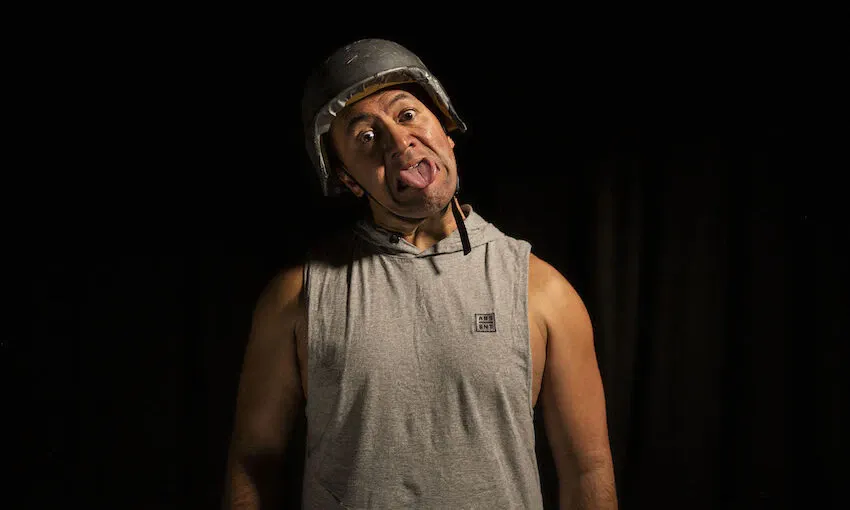
Rob Mokaraka performing Shot Bro: Confessions Of A Depressed Bullet. Photo: Vanessa Patea.
The Spinoff and Māori Television have produced a documentary Shot Bro, viewable for free online, based on Mokaraka’s life, the play, and recovery. The work isn’t about racism, rather it’s a brave, beautiful look at the difficult journey for whānau to prevent and recover from suicide.
Matariki Innovation
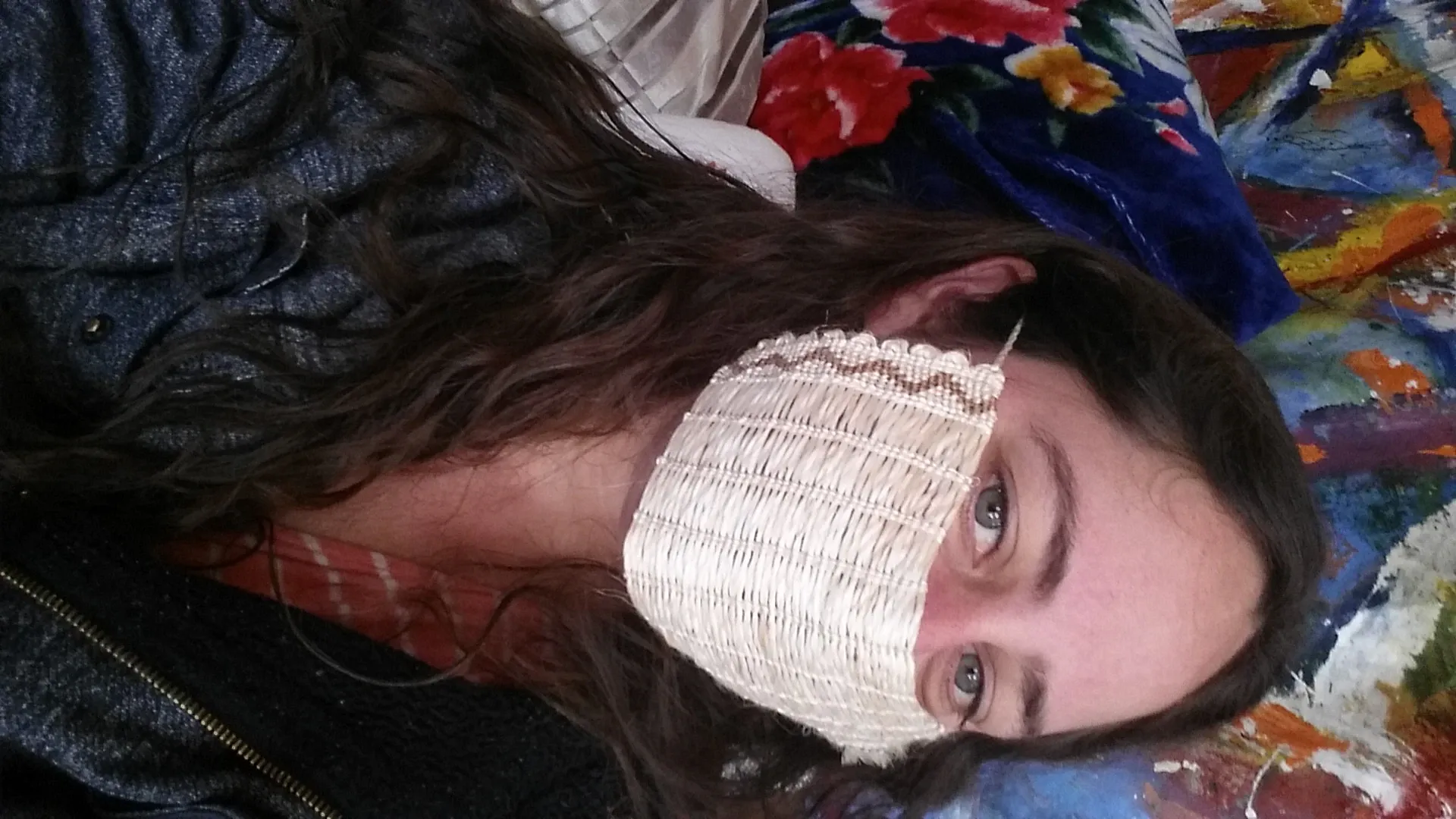
Kiriti Moore, muka face mask 2020.
It’s somewhat of a relief that we find ourselves at level one as Matariki rises - and no more so for arts events organisers nationwide. Many galleries are reopening with Matariki exhibitions and local council-led festivals will hopefully quickly be amping up.
Online there have been some strong initiatives already. The dynamic Māoriland Film Festival in Ōtaki had to cancel public screenings from day two onwards of their five-day festival (March 18-22). Instead, they worked quickly to be incredibly active with cinema online to match their kaupapa. Their rangatahi launched Ngā Pakiaka TV, filmed by rangatahi for rangatahi, sharing initially a short film daily from their national E Tū Whānau Rangatahi Film Challenge. Then Through Our Lens connected rangatahi filmmakers across the Indigenous world. This followed the team’s travels to Taiwan and Finland in January to deliver filmmaking workshops. The eight films made during these workshops (which had been scheduled to premiere at the festival) instead went online.
Māoriland are now also the recipient of a He Ara Development Fund grant from the NZ Film Commission. They’ve established a production company to develop “a slate” of feature films, with He Ara recipients Desray Armstrong (Te Aitanga-ā-Hauiti, Ngāti Porou) of Sandy Lane Productions and Karin Williams (Kūki Aīrini) of Multinesia Productions among a wealth of other Māori producers getting funded.
The Māoriland Hub in Ōtaki’s high street also features Toi Matarau Gallery, which has developed a considerable online presence to share and sell the work of Māori artists. A range of artist profiles have been rolled out over lockdown (including the work of Kiriti Moore - facemask pictured). Now, this Friday 12 June, Toi Matarau launch the first of two Matariki exhibitions (Kapiti News story here). Exhibition Te Kāhui o Matariki is based on the book of the same name - co-edited by the late Colleen Waata Urlich and Māoriland's Libby Hakaraia - and features a host of senior and emerging Māori artists, photographed by Ngā Puhi photographer Norm Heke.
Meanwhile, Tawata Productions have been rolling out a superb second series of Ngā Whakaaro Huritāo over lockdown, sharing reflections from Māori and Pasifika artists on their productions of new theatre with Tawata over the last 17 years. All up the second series features 10 writers. Miriama McDowell, for example, writes of her experience working on Hone Kouka’s play The Prophet, reflecting in the introduction about a life in theatre: “I moved from job to job, from place to place, with different people every time. In the context of COVID-19, it’s a recipe for disaster! All those bubbles I move between!“ She credits her learning from this production as being “what it means to be an Indigenous artist, a Māori artist.”
Coming up shortly from Tawata is the eleventh year of this development powerhouse’s Breaking Ground Festival in Wellington for the development of new work.
Meanwhile, in Whakatāne, Maungarongo Te Kawa is showing his remarkable Matariki quilts. Here’s a piece just released on The Spinoff art section on Te Kawa and his work by Amanda Thompson.
Lockdown Inspired Projects
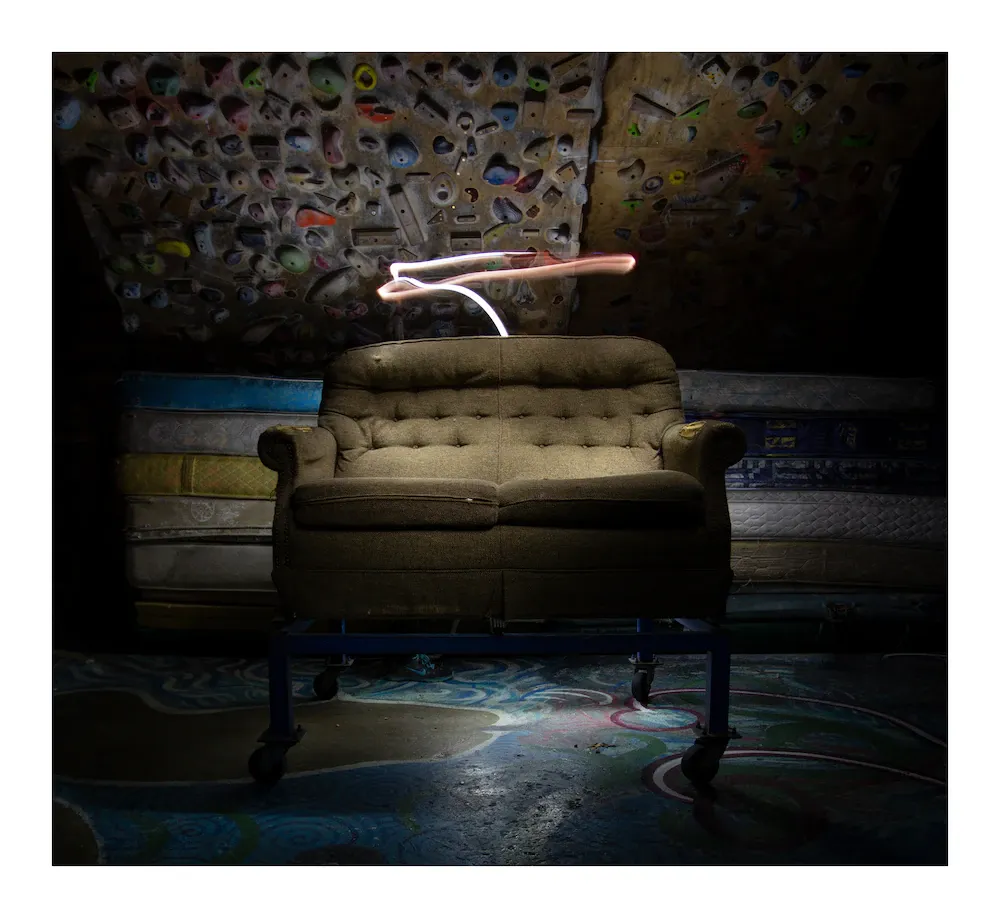
Image of Nautilus Creative Space, Owhiro Bay, Kedron Parker, 2020, Gallery Faux.
Gallery Faux has just opened - or not opened you could say. As the name of this new Wellington initiative by group Occupation Artists indicates, it doesn’t exist physically. It’s an online pop-up. Devised during lockdown, there’s some wit around their lack of openings (there’s a photoshopped white cube space with the raising of wine glasses) but also a push to explore how to present virtually. The opening show Nautilus into Night by Kedron Parker documents Nautilus Creative Space, near Parker’s home in Owhiro Bay and is accompanied by a piece of short fiction by Tim Corballis 'Renewal of life’s possibilities’, a delightful meditation on coming out of isolation. Five more exhibitions are to follow.
Meanwhile, the excellent Artist in Residence podcast series of ‘personalised audio experiences’ on The Pantograph Punch is wrapping up with the tenth and final instalment by musician Bic Runga. Level 2 is “a tentative celebration of starting to come out of lockdown.”
“My mind had the time to run the full gamut of feelings,” Runga writes about going to level two, “sadness at the news, gratitude that we were safe, despair, many ominous feelings, but often hope as well that there was a huge potential to reset our world.”
Six minutes in length, Runga says it was the first time she’d written a longer piece of music - and one without words. “I'd never had the challenge before of writing using only melody and harmony to convey the range of things I'd been feeling... It's an apprehensive disco for one, as we tentatively leave our houses again.”
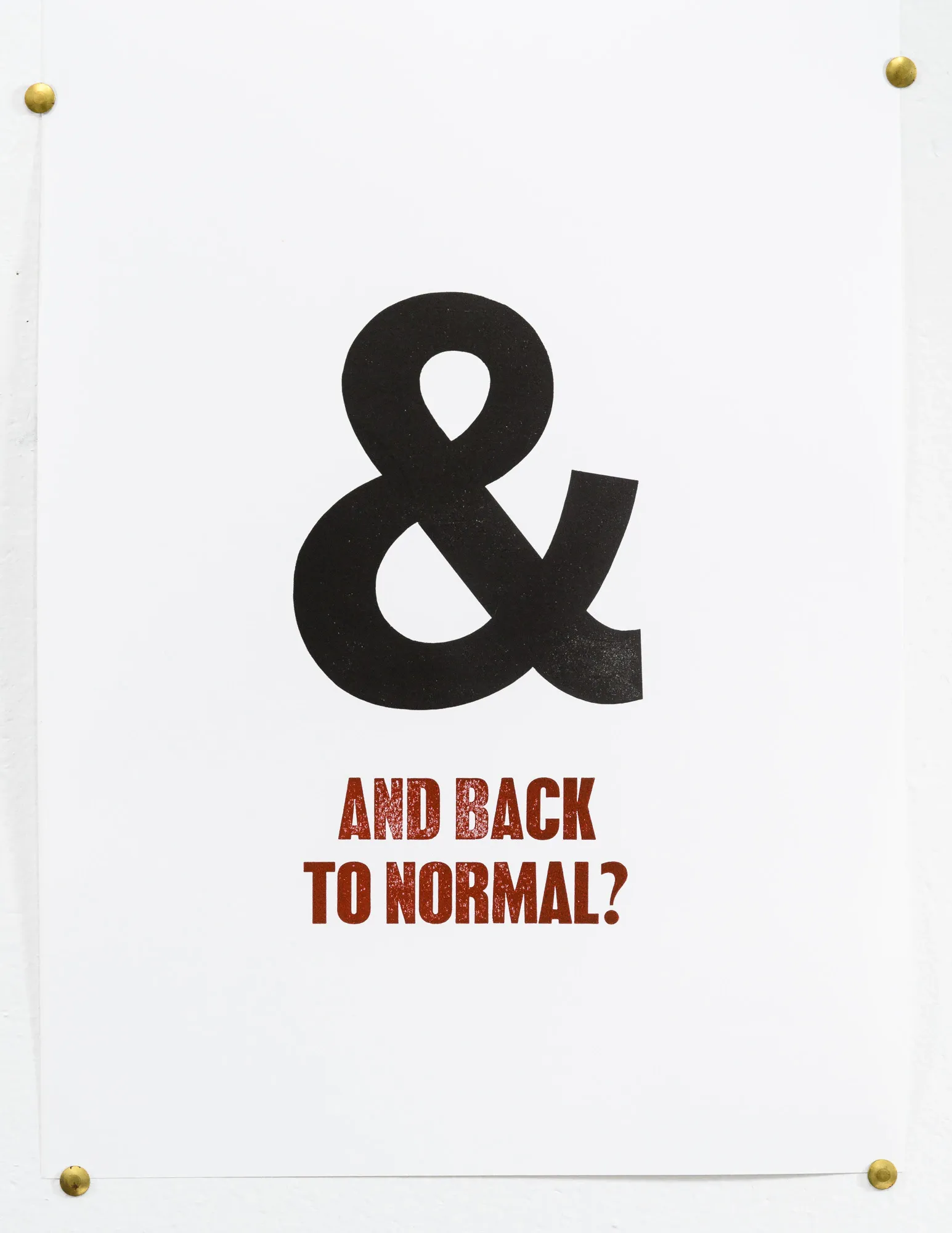
‘& - And back to normal?’ The Lockdown Alphabet, Joe Buchanan, linocut and letterpress, 2020.
Closer to my home in Paekākāriki, Joe Buchanan of the small Diatom Press has created as a series of hand-cut lino and letterpress prints ‘a Lockdown alphabet’ in his garden studio, with plenty of the salt of personal politics: D is for Death Does Discriminate. ”The collection documents and comments on the full sweep of the lockdown journey,” writes Holly Jane Ewans with its publication on Paekakariki.nz, “from our sudden fascination with viruses to haircuts to hope.” The final print is the ampersand: ‘& - And Back to Normal?’
Meanwhile New Zealand Festival has published curator Emma Ng’s thoughts on lockdown and what initiatives she was taking inspiration from. “It seems to me,” she opines at the end, “that a flooding sense of relief might see people largely rush back to their old habits and values. How can we sustain the act of imagining a future beyond our current reality? Artists have always been involved in collective imagining and will continue to play a big role in pushing out the horizons of public imagination.”
Music to our Ears
Now we can fully believe it - the dream of a summer of homegrown music festivals is upon us, and I hope there is a winter kanikani coming to a community hall or venue near you soon.
Splore announced tickets were going on sale moments after Jacinda Ardern’s level one announcement (reported here on Newshub). And you might want to be in quick. Back on 25 May, RNZ reported that summer festival tickets were selling fast despite having local-only lineups. At that point, Rhythm and Vines festival had already sold 90% of its 20,000 tickets, and as I write only limited packages were available.
Welcome, then, are smaller alternatives. Whanganui has announced what it is calling its first music festival, Sound Valley in February (Whanganui Chronicle article here). Kora and Tiki Taane have been announced, but they haven’t got a venue yet. Expect an announcement soon.
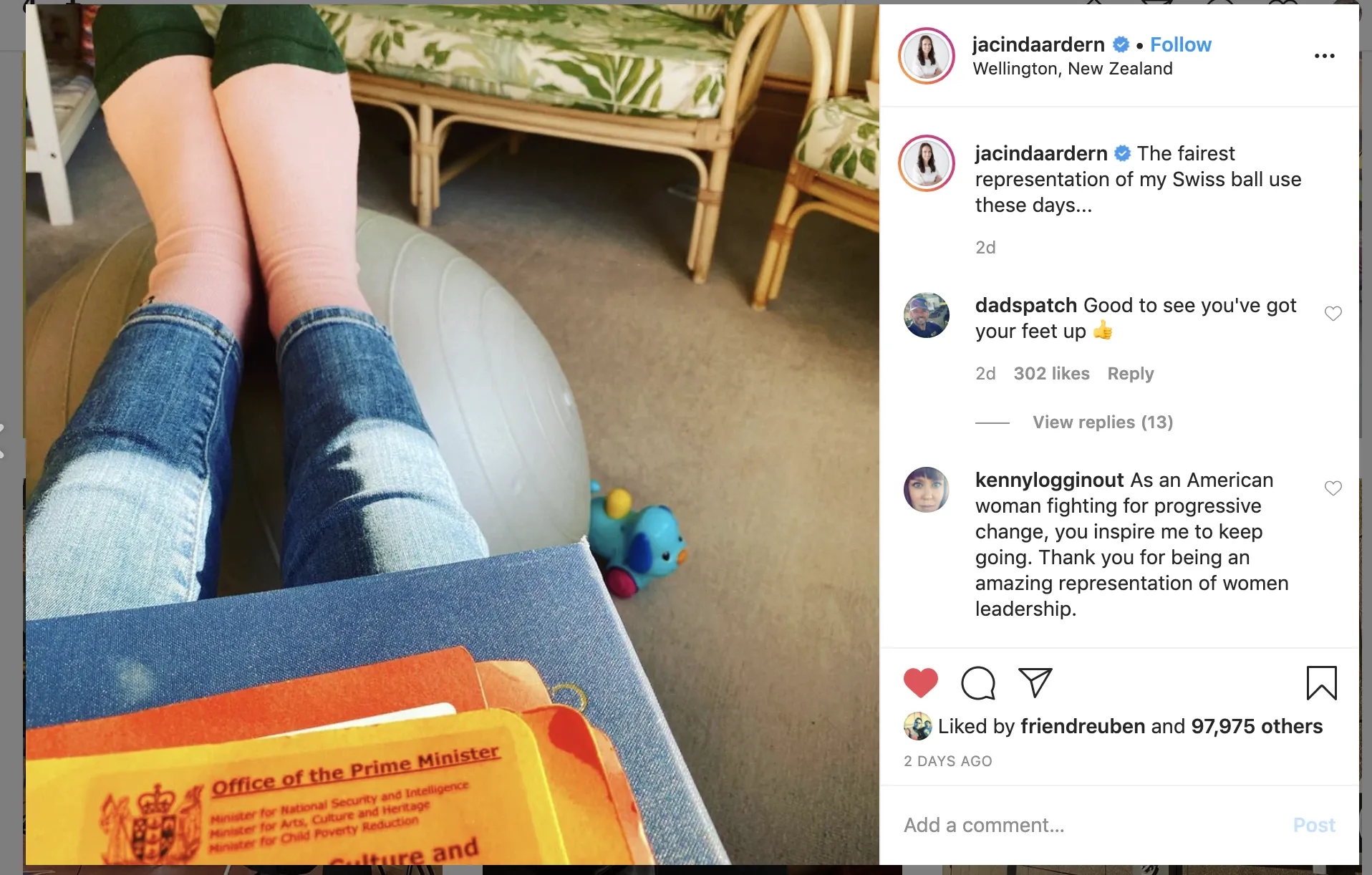
Jacinda Ardern's socks support NZ Music, Image: Instagram.
As previously commented on in the Lowdown, the move to level one is vital to the music industry, even with a healthy recovery package announced. Jacinda Ardern has even put her feet out there to the cause, buying a pair of limited edition Nadia Reid socks before attending her concert on Friday - the first concert back for Wellington’s San Francisco Bathhouse. Said socks were Instagrammed.
Meanwhile, indoor North Island touring winter festival Good Vibes with nine acts (how many acts exactly turns a concert into a festival?) is now all on 17 July - 8 August, making it as reports Stuff one of the first major live tours in the wake of shutdown.
Arts News around the Traps
Arts news on the online media platform BusinessDesk is few and far, so credit to Pattrick Smellie for ‘Is the art market COVID-proof? Well, just maybe.’ That headline is a rather controversial claim, but it relates to the secondary market. The story records that in the first post-lockdown art auction at Dunbar Sloane (and the last in their current 101-year-old premises before moving into a new home) market sentiment was ‘beyond buoyant’.
“We generally do really well in recessions, but the market is particularly strong," said Helena Walker, director of fine and applied art to BusinessDesk. "People at the top end of the market still have money." Nevertheless, as Hamish Coney says in the story, pent-up interest over lockdown may well have helped. Smellie’s story provides some excellent coverage on the mechanics behind the secondary art market and is well worth a read.
Following on from the report in Lowdown late May on concerns with the proposed Auckland Council emergency budget of the vulnerability of arts organisations reliant on funding agreements with council, The Big Idea is urging people to give their feedback on the budget by 19 June. In an editorial published Tuesday, stated council proposals include the public art budget being cut by 70%, and fewer and smaller programmes and grants overall. Executive Director of Basement Theatre Elise Sterback talks of Auckland Council’s support as critical to their success, and emphasises that “money spent on arts organisations is not wasted, but returned tenfold.“
Mayor Phil Goff has said Auckland Council are predicting a shortfall of over $500 million in revenue over the next financial year. Last week co-editor of Newsroom Tim Murphy wrote this interesting analysis of the pickle Auckland Council finds itself in, and where central government may and may not help. One area in an interview Phil Goff mentions as having targeted central government rescue money already attached is ‘the arts sector or libraries’: "These are targeted at narrow areas. Some might be tens of millions of dollars. The amount that might come to us for these purposes is not huge but we welcome any support we can get from the Government in that regard."
We have little news to hand of specific proposed cuts by other local authorities (do let us know by email) with the exception of Hutt City Council who way back on May 7 announced amongst its cost-saving measures a $50,000 cut to museums (likely the Dowse Art Museum and Petone Settlers Museum) - which is rather a drop in the bucket next to the $400,000 taken off the Govett Brewster last month in New Plymouth.
Meanwhile, Creative New Zealand this week have announced they are investing an additional $13 million into its COVID-19 Emergency Response Package, to respond better to “the extraordinary volume of applications” for the closed first phase of arts funding, almost doubling their initial allocation. “In the seven weeks that Phase 1 was open, we received triple the number of applications we would normally receive in an entire year across our funding programmes, including a full year’s worth of applications in the last week,” says Creative New Zealand Chief Executive Stephen Wainwright. Creative New Zealand had already made the unprecedented move of closing the Arts Continuity Grant and Emergency Relief Grant opportunities early due to increasing demand.
CNZ will continue to roll out the announcement of results on Friday afternoons, except this Friday 12 June. You have to give credit to its staff and their mahi - they must have heads well down! Notification of final decisions for Arts Continuity Grant applications is expected on 10 July and for Emergency Relief Grant applications by late June.
A long time between plinths for Dunedin public sculpture, and now Ōtepoti based artist Ayesha Green (Kāi Tahu, Ngāti Kahungunu) has been announced as the selected creative behind a major public work for The Octagon. Refreshingly for public work (sadly, it’s not yet more usual) ‘Ko te Tūhono’ has been developed in close consultation with mana whenua, Te Rūnaka o Ōtākou. In the Otago Daily Times, Green describes the work as a "gateway connecting us with our deep ancestral ecologies; it is a passage to our landscape, our life and the wairau we share with the harbour … As a monument to our tipuna and our tamariki, Ko te Tūhono transcends time and place."
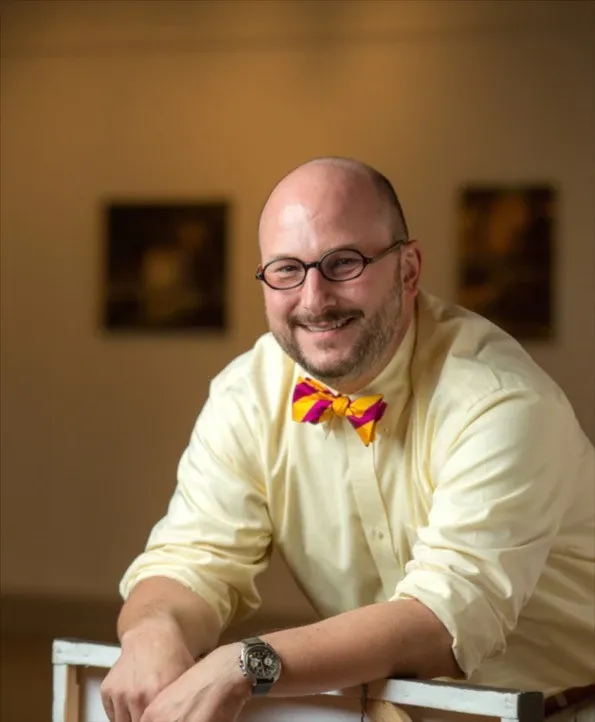
New Creative Bay of Plenty GM Eric Holowacz.
Eric Holowacz has returned to the Bay of Plenty after time heading the Wellington Fringe and Cubadupa to head Creative Bay of Plenty, which connects and develops the arts in the Bay. Holowacz was previously Director of the Whakatāne Museum where he instituted, among other things, the Volcanic Arts Residency which at the time was an inspired idea until the Bay of Plenty’s volcanic foundations had other ideas.
Auckland and New York-based screen production house Augusto has won the option to develop a comedy series to be executive produced by Taika Waititi and directed by Jemaine Clement, Ass. It has been created by Cori Gonzalez-Macuer and Louis Mendiola, and centres on a depressed, broke puppeteer who accepts work as a fill-in for a famous but missing donkey actor on a popular American TV political comedy, Hey Donkey! Yes, how could you look away?
The finalists have been announced for the 2020 New Zealand Book Awards for Children and Young Adults over seven categories, once again demonstrating the remarkable depth of publishing in this area. The full list is here at Creative New Zealand, with an online ceremony planned for 12 August (surely there’s now time to book a room). Tagata Pasifika has highlighted the work of three excellent Pasifika writers: Lani Wendt Young, Selina Tusitala Marsh and Courtney Sina Meredith.
Thank me Later - Online Gems
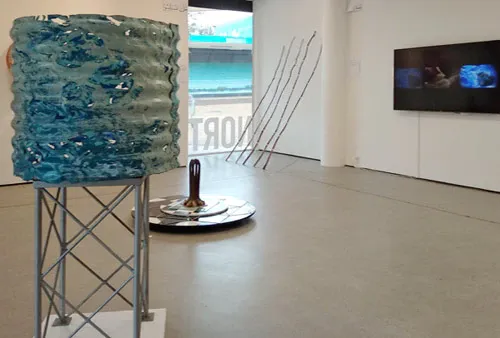
Jeff Thomson water tower work as part of installation Ko rātou, ko tātou On Other-ness, on us-ness Northart, 2020.
Writer and curator Sonja van Kerkhoff has blogged on and documented her exhibition Ko rātou, ko tātou On Other-ness, on us-ness, at Auckland’s Northart that few saw due to lockdown. The impetus for the exhibition was van Kerhoff’s own experiences after the Christchurch Mosque massacres: “I realised how little experience many empathetic New Zealanders had of Islam… I lived in Muslim-dominated neighbourhoods in the Netherlands for almost 30 years and worked with mosques and Muslim shop owners in relatively conservative communities in two exhibitions that I curated… With this background, I started work on developing a show intended to give some insights into Islam, utilizing works by contemporary New Zealand artists as the medium.” Five texts in Arabic were positioned high on the walls around the gallery to re-contextualize the adjacent artworks.
The Sapling continues its exemplary work looking at books for young people. Here’s Ange Travers of Little Unity in Auckland in the second instalment of their book memories series on Dreamhunter by Elizabeth Knox.
